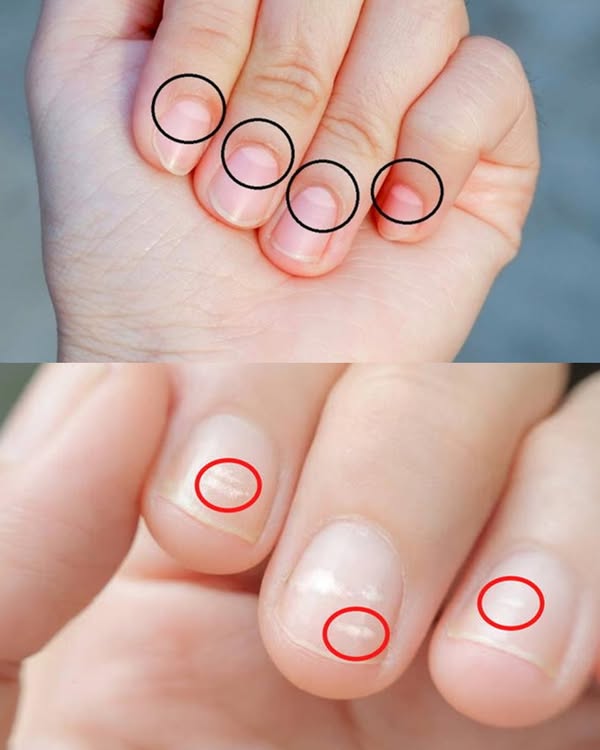ADVERTISEMENT
To Next Page Or Open button (>) and don’t forget to SHARE with your Facebook friends
⚠️ Very Large Lunulae
- May indicate: Cardiovascular stress, high blood pressure, or hyperactive metabolism.
- Large lunulae can sometimes be seen in athletes or people with high levels of physical activity.
⚠️ Discolored Lunulae
- Blue/purple tint: Could suggest poor oxygenation or circulation issues.
- Red lunulae: Rare, but may point to heart problems or autoimmune conditions.
- Yellow or faded lunulae: Could be a sign of poor liver function or malnutrition.
🧬 Factors That Influence Lunulae
- Age: Lunulae may shrink or disappear with age.
- Diet: Deficiencies in nutrients like iron, zinc, or vitamin B12 can affect nail health.
- Chronic conditions: Diabetes, thyroid dysfunction, or kidney issues may influence their size and visibility.
- Genetics: Some people naturally have more visible lunulae than others.
📝 Final Thoughts
While lunulae aren’t a diagnostic tool on their own, they can serve as a small window into your body’s overall health. Paying attention to changes in your nails — including lunulae — may help you spot imbalances early on.
Remember: if you notice sudden changes in nail color, shape, or lunula size, it’s best to consult with a healthcare professional. Sometimes, the body whispers before it shouts — and your nails might just be whispering now.
Have you ever noticed changes in your lunulae? 👀 Let me know what you’ve observed!
